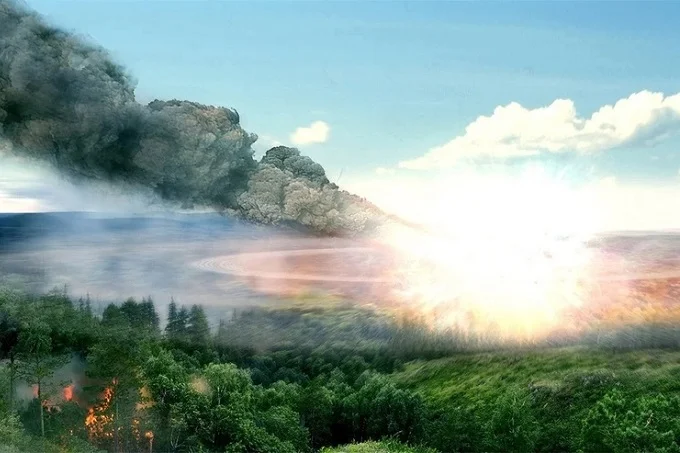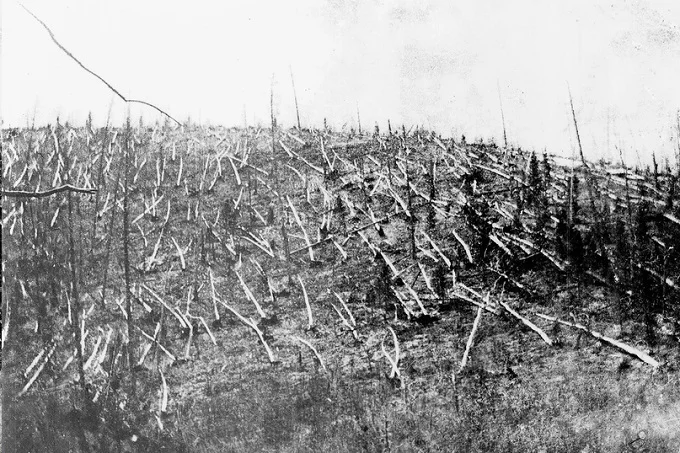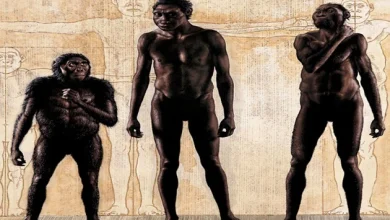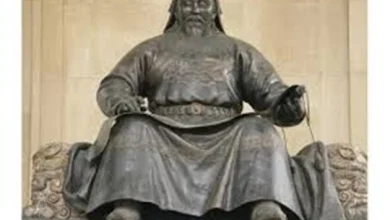What caused the Tunguska event and the mystery of the meteorite

On June 30, 1908, a unique and unexplained incident near the river Reka Podkamennaya Tunguska in Eastern Siberia, when a dazzling flash and the quick fall of a celestial body were subsequently known as the Tunguska meteorite, was recorded.
At first, the region was filled with booming sounds that sounded like thunder. Then, a massive explosion sent a shockwave through the forest, causing it to collapse completely for miles around. The meteorite fell 60 kilometers from Vanavara, a tiny community in the Evenkiysky District where several people watched the incident.
Some nomads near the landing location of the mysterious space object were also witnesses and inhabitants of the settlement. The impact of the Tunguska meteorite resulted in a massive blast wave that destroyed all life in its path. The explosion was also followed by a powerful flash, which resulted in a large-scale fire when mixed with the hot air.
The “brilliant evenings of 1908” affected a large region stretching from the Yenisey River to the Atlantic Ocean. The sky really sparkled for many evenings, creating the appearance that it was day outside the window rather than darkness. The clouds, which are at the height of 80 kilometers, reflect the sunlight, resulting in this appearance. On June 30, this incredible event occurred, and inhabitants of the whole region stated above were able to see it.

The Tunguska meteorite’s impact was felt not only by humans but also by the taiga’s coniferous trees, which were entirely destroyed. During the investigation of the meteorite fall, scientists discovered that the power of the explosion was huge. Two nuclear bombs equivalent to those used on Hiroshima would have been required to recreate such an impact. The explosion also produced radioactivity, which was discovered. And it is this phenomenon that has become one of the most enigmatic and contentious events in human history.
On the basis of this occurrence, the most bizarre accounts of what transpired have been proposed. Some thought only marsh gas erupted, while others said it was an extraterrestrial spacecraft collapsing in the taiga region. There are suggestions that a comet impacted the Earth, or that a meteorite from Mars, unknown to science, sped by. A. Jackson and M. Rian, scientists, offered the theory that our planet crashed with a black hole. Felix de Roy, a French researcher, believed it was just a cloud of cosmic dust that was getting in the way of our planet.
Several expeditions searched for the remnants of the Tunguska meteorite, but only discovered twelve cone-shaped holes at the impact site. Because there are not many studies on this topic, their depth is unclear. However, experts have lately renewed their interest in the nature of these holes and the condition in the vicinity of fallen trees in general.
The existence of holes in the ground and the confusion around the position of fallen trunks have sparked a lot of discussions. Researchers feel that a thorough examination of the region focused on the holes, is required. There’s even a theory that these abnormalities have some kind of earthly genesis.
A new expedition was just launched with the purpose of studying the region of the Tunguska meteorite crash. Members of the expedition team later discovered quartz stones with purportedly odd handwriting on them, according to Yuri Lavbin, the chairman of the charity that examines the Tunguska phenomena. The inscriptions on the cobblestones, according to some scholars, emerged as a result of the impact of some man-made substance, maybe plasma.
For the last 30 years, renowned scientist Gennady Bybin has been investigating the enigma of the Tunguska meteorite. According to him, an ice comet impacted our planet near the river Podkamennaya Tunguska, not a meteorite. He came up with this theory after carefully reviewing the records of Leonid Kulik, the area’s first researcher. Leonid Kulik found an ice material at the time, but he dismissed it since he was looking for something completely different.
This block of ice under the peat, according to Bybin, is not evidence of permafrost, but rather a reinforcement of his idea. The comet that struck with the Earth was broken into several fragments. However, the majority of experts still think it was a meteorite that collided with the Earth. Leonid Kulik and his team looked for any signs of this cosmic object. However, no crater or other traces of a meteorite have yet been discovered at the supposed impact location.
On the other hand, the researchers were able to attest that the forest had fallen in the shape of a fan, with some tree trunks remaining intact but without their limbs. Further explorations showed that the fallen forest’s overall pattern was in the form of a butterfly. Numerous computations and estimations of the time of impact revealed that the explosion happened while the plane was still in the air.

Of course, there were fiction authors involved in this scenario. In his book, Aleksandr Kazantsev presented the incident as the crash landing of a Martian spacecraft. In one of their publications, Arkady and Boris Strugatsky devised the contramotion idea, according to which time travels backward. As a result, in their work, the spacecraft does not land on Earth but rather flies away.
What transpired that day is the subject of several hypotheses and interpretations. Many researchers are still investigating this phenomenon, with excursions to the Podkamennaya Tunguska River region being organized. It involves not just Russian, but also international scientists. And all we can hope for is that we will still be able to view the complete picture of what transpired at the turn of the century.




